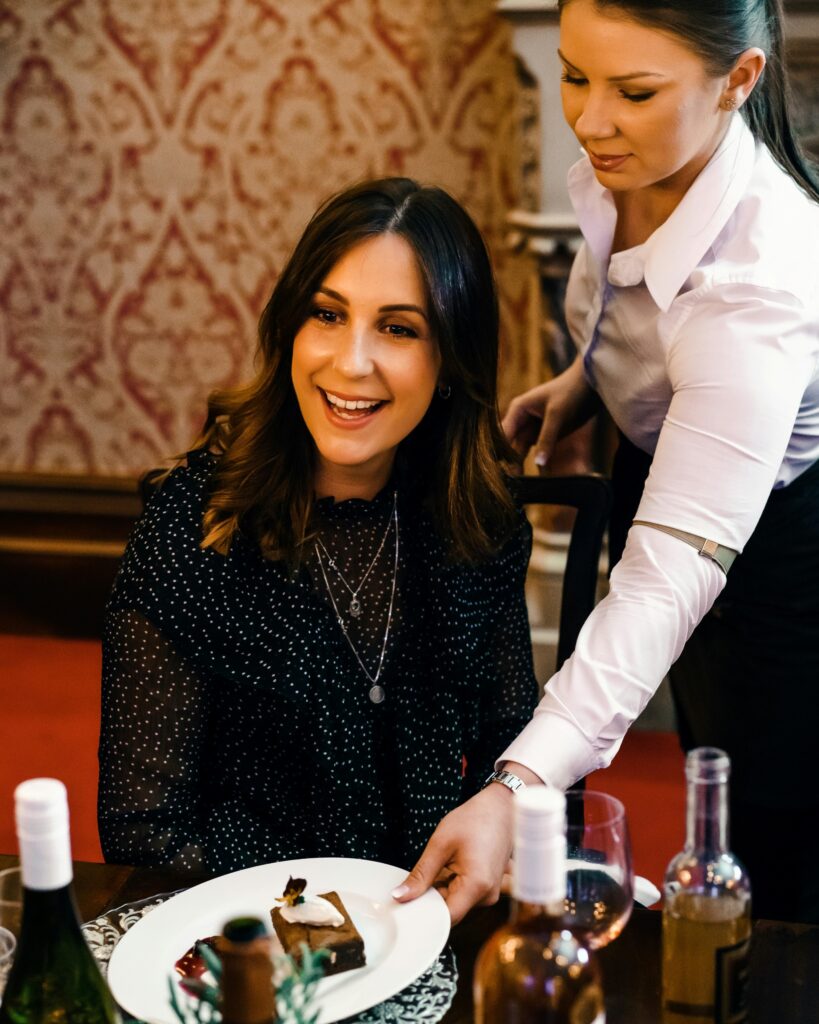Balancing Customer Growth and Spend Per Head: Strategies for Success
Reflections of a Reluctant Landlady
When I first started in hospitality, I was worried about my selling skills and I hadn’t given spend per head a second thought. Coming from an HR background, I associated selling with pushy salespeople (a stereotypical second-hand car salesman or a sales assistant in a quiet clothes shop who pounces on you the minute you walk through the door to have a browse). However, I quickly learned that I had a warped view of sales and you don’t have to be pushy to be good at sales. I also learnt that selling a side of garlic bread or an extra drink is simpler than promoting organisational changes such as implementing an appraisal system or a new competency framework. I was better at it than I thought!
Initially, I focused on increasing customer numbers. However, I soon realized that running a successful pub isn’t just about filling seats—it’s about ensuring each customer has a memorable experience and spends a bit more during their visit.
Why Spend Per Head is Important
Increasing customer numbers is crucial, but enhancing the spend per head can significantly boost your revenue without increasing operational costs. This strategy maximizes each visit, enhancing profitability while providing a great experience to your customers.
Many venues overlook the importance of spend per head and fail to train staff to upsell, missing opportunities for increased profitability. It surprises me how often I’m not asked if I’d like another drink during my meal or a coffee afterward.
Some larger chains set targets for waiting staff to focus their minds on upselling, like how many dough balls or garlic bread they sell weekly. While this approach might not suit everyone, it demonstrates how it can increase spend per head.
Upselling doesn’t mean being pushy; it’s about offering choices and informing customers about what’s available.
Offer Choice, Not Just Upsells
- Craft a Diverse Menu: A varied menu with different price points caters to various budgets and preferences. Highlight unique or premium options to entice customers to treat themselves.
- Offer “While you Waits” – appetisers whilst they peruse the menus or wait for their food.
- Create Experience-Based Offers: Bundle meals and drinks into attractive packages, like a “date night special” with a shared starter, two main courses, a sharing dessert, and a bottle of wine.
- Highlight Specials and Add-Ons: Train staff to suggest specials and add-ons casually. Simple recommendations can significantly increase sales and profitability. For example, they can say, “We have a fantastic local cheese board that pairs perfectly with your wine,” making it sound like a thoughtful recommendation rather than a sales pitch. Or simply, “Would you like onion rings to go with your steak?” can greatly increase sales and therefore profitability.
- Train Staff to Service Tables Well: Ensure staff monitor empty glasses, offer drinks, suggest desserts, and promote coffee after meals.
- Think Beyond Food & Beverages: Encourage staff to upgrade room sales or suggest celebratory extras like a bottle of Prosecco for special occasions. Asking if they are coming to your next quiz night can lead to repeat visits.
- Loyalty Programs: Implement loyalty programs that reward frequent visits and higher spending, encouraging repeat business and increased spending. For example, offer a free dessert after five visits or a discount on their next visit after spending a certain amount. This encourages repeat business and higher spending over time.
- Engage with Customers: Create a warm atmosphere where staff can engage with customers, leading to natural upselling through friendly interactions. A friendly chat about a new beer on tap or a special event coming up can naturally lead to increased interest and spending without feeling forced.
The Balance Between Business and Hospitality
The goal is to enhance the customer experience while boosting revenue. By focusing on providing choices and highlighting value, you can increase spend per head in a natural and welcoming way. Customers appreciate quality and thoughtful recommendations, and these strategies ensure they feel valued rather than upsold.
By balancing efforts to attract new customers with initiatives to increase spend per head, you’ll create a thriving pub environment that supports sustainable growth and customer satisfaction. Here’s to your continued success!
Want to read more blogs like this – visit our blog page.




